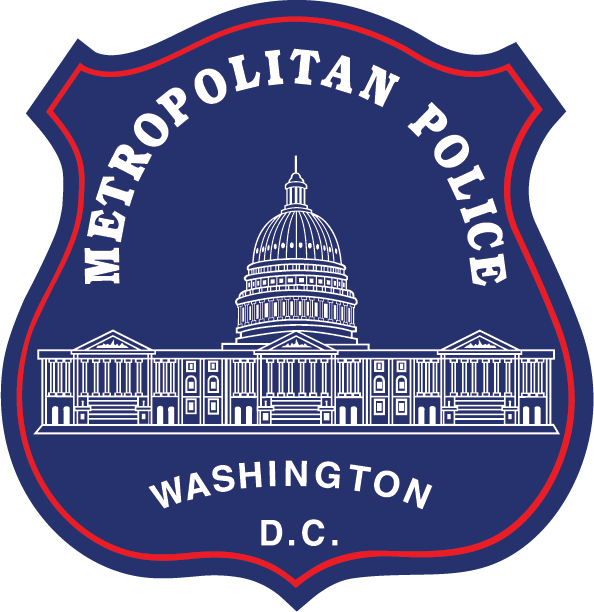The Metropolitan Police Department’s Air Support Unit provides a variety of support missions to our patrol districts and other specialized units in Washington, DC. These missions include aerial surveillance, search and rescue operations, traffic monitoring and reporting; as well as, the timely dissemination of information to involved law enforcement units.
The Metropolitan Police Department’s Air Support Unit is vital to patrol operations. This unit provides watch surveillance and allows patrol managers to properly allocate and distribute patrol resources while conducting overwatch. The air crew within this unit includes one pilot and one tactical flight officer who work together to accomplish missions and safely provide units with real-time information and assessments.
The Air Support Unit also enhances the capabilities of other units within the Special Operations Division (SOD). Some examples of these capabilities include the unit’s ability to communicate with detail commanders for large First Amendment assemblies and the utilization of forward-looking infrared (FLIR) cameras on nighttime or wooded area searches.
Enhancing Our Fleet in 2024
The Metropolitan Police Department’s Air Support Unit is an invaluable public safety resource, enabling MPD to conduct airborne law enforcement operations, support search and rescue missions on land and water, and perform countless other, often lifesaving assignments.
Improved Capabilities
The Air Support Unit is indispensable, and the new Falcon is poised to augment the capabilities and safety protocols of the Air Support Unit. A two-person helicopter crew can spot and quickly supply images and information that may be helpful to address fast-moving situations safely and effectively.
It is especially effective in supporting MPD’s Special Operations Division — for example:
- Helping to manage and ensure the safety of large-scale First Amendment assemblies.
- Using its infrared cameras to guide canine units on nighttime or woodland searches.
Flight to the Future
In 2024, the Air Support Unit will launch into a new era with a new helicopter. The Airbus H-125 is:
- Faster, more agile and more fuel-efficient than the AS 350 B3 it will replace.
- Equipped with a state-of-the-art camera system that will send high-resolution digital images to MPD’s Real-Time Crime Center.
The new copter will mark the next milestone in the history of MPD’s airborne operations:
- MPD launched its first airborne unit, called the Helicopter Branch, in 1962.
- The Helicopter Branch was shut down in 1996 because of budget cuts.
- MPD launched its Air Support Unit in 2001, using the call signs “Falcon 1” and “Falcon 2.”
A Look at Falcon Stats
In 2023, the Air Support Unit:
- Flew more than 600 flight hours
- Responded to 1,517 calls for service
- Assisted in 194 arrests/recoveries
- Assisted with 1,083 traffic checks
- Assisted outside agencies 851 times
Mayor's Press Conference
See Mayor Muriel Bowser and Chief Pamela A. Smith announce major upgrades to the Department's Air Support Unit, including the launch of the city's new Unmaned Aircraft System/Drones program and new helicopter to replace Falcon 1.
A Brief History of the Unit
The Department’s Helicopter Branch was organized in 1962 and included a traffic helicopter. Through this early use of the helicopter as a surveillance platform, its usefulness was soon recognized and the fledgling helicopter fleet consisted of three Bell G4A Helicopters by 1971. The original base of operations was at the Anacostia Naval Air Station, but later moved to National Airport. The helicopter branch later expanded, adding more helicopters, including two Huey UH1Bs that were large enough for members to rappel out of onto roof tops when conducting tactical operations. One of the helicopters was outfitted with pontoons for water rescue.
The Department at one point had over ten helicopters. The original call sign was “Condor” for the aviation radio call sign, but the name “Juno” was used for the police radio call sign — these were maintained until 1996, when the Helicopter Branch was disbanded and closed due to budget cuts.
Today, the Air Support unit is back up and operational, flying out of an old civil aviation pad off of South Capitol Street. With aerial support now a reality, officers in the air could assist members on the ground in locating and tracking suspects, aid in finding missing persons, observe large events on the National Mall, stadiums, and other key gathering spots to help locate patrons needing medical attention, and much more. When these helicopters are operate today, they are designated with the call sign “Falcon 1” or “Falcon 2.”
